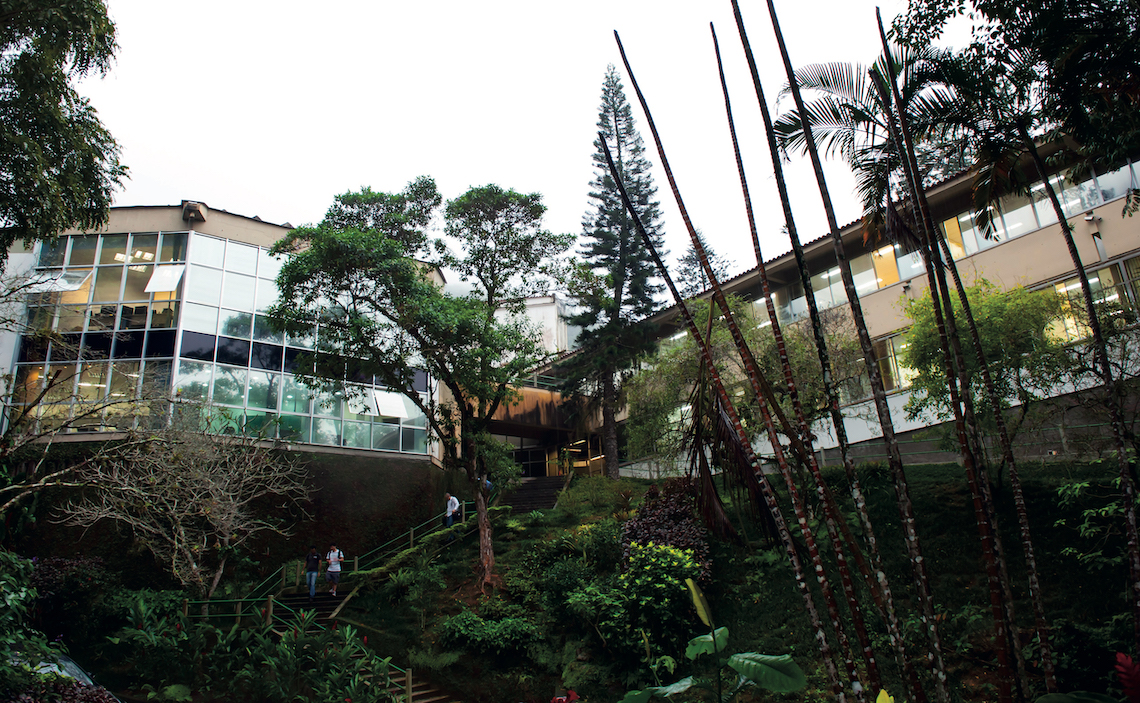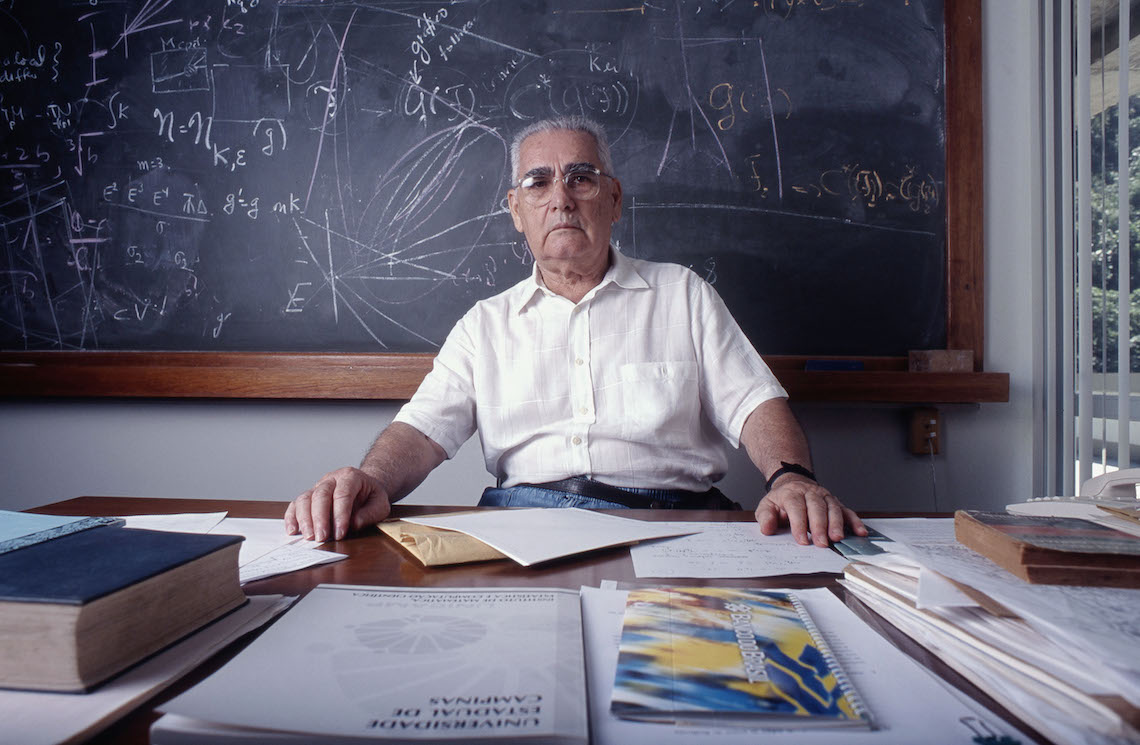Maurício Matos Peixoto, a pioneer among the first generation of professional mathematicians in Brazil, is also known for his role in cofounding the Institute for Pure and Applied Mathematics (IMPA) in the 1950s. IMPA was the first research unit to be created by the Brazilian National Council for Scientific and Technological Development (CNPq), of which Peixoto served as president from 1979 to 1980. He also headed the Brazilian Academy of Science (ABC) from 1981 to 1991. Born in Fortaleza, Ceará, northeastern Brazil, Peixoto died in Rio de Janeiro on April 28, at the age of 98.
“He regarded mathematics almost as a holy calling, to which he was utterly devoted,” says mathematician Marcelo Viana, director general at IMPA. In 2010, Viana offered to compile and publish a selection of articles authored by Peixoto who, at the age of 89, was then an emeritus professor at the institute. “After avoiding the subject for a while, he finally asked me whether I could wait a year or two as he was working on a paper that would be the crowning work of his oeuvre. He seemed immune to time.”
Peixoto’s skills in mathematics were initially shown to be sorely lacking when he failed the subject in the second grade of high school at Colégio Pedro II, in Rio de Janeiro. But his after-school tutor’s enthusiasm about math caught on with him as well. His grades soon improved and after he passed the year-end examination, he became determined to pursue a career involving mathematics.

Léo Ramos Chaves
The IMPA, in Rio, was founded in 1952 as the brainchild of Lélio Gama, Leopoldo Nachbin, and PeixotoLéo Ramos ChavesBecause higher education programs in mathematics proper were then in short supply—the first was created in 1934 at the then recently created University of São Paulo (USP)—Peixoto decided to attend the School of Engineering at the then University of Brazil, now the Federal University of Rio de Janeiro. He graduated in 1942 and completed his doctorate in 1945. Although he successfully registered as a chartered engineer, he chose not to pursue a career in the field. Instead, he lectured in mathematics until in 1947 he was hired to a position at the School of Engineering.
He also lectured in the US on three different occasions, as a visiting professor at the University of Chicago (1949–1951), Princeton (1957–1958), and Brown University (1964–1970). He subsequently taught at USP’s Institute for Mathematics and Statistics (IME) (1973–1978). When he returned from his first spell in the US, in 1952, he and two former faculty colleagues, Leopoldo Nachbin (1922–1993) and Lélio Gama (1892–1981), developed a proposal to create the IMPA.
Peixoto specialized in geometry and topology, a branch of mathematics concerned with the spatial properties of geometric objects that are preserved through continuous deformations. “Although he was a pure mathematician, he always had a way of translating the concepts he was teaching into geometrical figures,” recalls mathematician Pedro Leite da Silva Dias, head of the Institute for Astronomy, Geophysics, and Atmospheric Sciences (IAG-USP).
As a researcher at IMPA, he developed a theorem later named after him which he described in papers published in 1959, 1962, and 1963. His theorem revived the concept of structural stability in dynamical systems proposed in 1937 by Soviet physicist Aleksandr Aleksandrovich Andronov (1901–1952) and his fellow countryman, the mathematician Lev Pontryagin (1908–1988). Systems—or phenomena involving objects in causal interaction—are said to be dynamical if they have states that change over time according to a mathematical law. A dynamical system is said to be structurally stable if a slight alteration in the law governing state change over time will not affect its topological properties. Peixoto’s Theorem establishes mathematical conditions necessary and sufficient for a specific type of dynamical system, known as a two-dimensional autonomous dynamical system, to be structurally stable.
Although his training was in engineering, Peixoto chose to teach mathematics
Tiago Carvalho, a mathematician in the Department of Computing and Mathematics at USP Ribeirão Preto, says the theorem is useful in understanding phenomena such as the dynamics of machines, chemical reactions, predator-and-prey relationships, or the evolution of disease. “This was the first high-level theorem in the field of dynamical systems,” says Viana. Peixoto’s work is also historically significant in that it strengthened interaction with mathematicians at the University of Chicago and the University of California (UC) in Berkeley, leading them to expand collaboration in this field and extend invitations to young Brazilian researchers, such as Jacob Palis, who pursued his doctoral studies at UC (1967) and, years later, served as president of IMPA (1993–2003) and ABC (2007–2016).
Peixoto was a friend of Candido Lima da Silva Dias, a professor at IME-USP and the father of Pedro Dias. “They often talked into the wee hours of the night, discussing politics and mathematics. I learned from them the importance of people putting aside their differences in pursuit of broader goals,” he says.
Toward the end of 2007, when he took a position as director at the National Laboratory of Scientific Computing (LNCC), Pedro Dias paid a visit to the rural school that Peixoto then ran in Petrópolis, a hillside town near Rio—the institute had extended support to the school under the previous director. “I remember the sparkle in Maurício’s eyes as he showed me around and talked about the local ‘farm kids,’ as he called his students,” says Dias. LNCC continued to provide support, including technicians to install or repair equipment and computer networks at the school, which Peixoto had inherited from his first wife, Marília Chaves (1921–1961), who was also an engineer and mathematician, and the first female student to attend ABC, in 1951.
Peixoto married three times. Marília Chaves was succeeded by Maria Lucia Alvarenga, then Alciléa Augusto. He had four children: Martha, Marcos, Elisa, and Ricardo.
Republish

